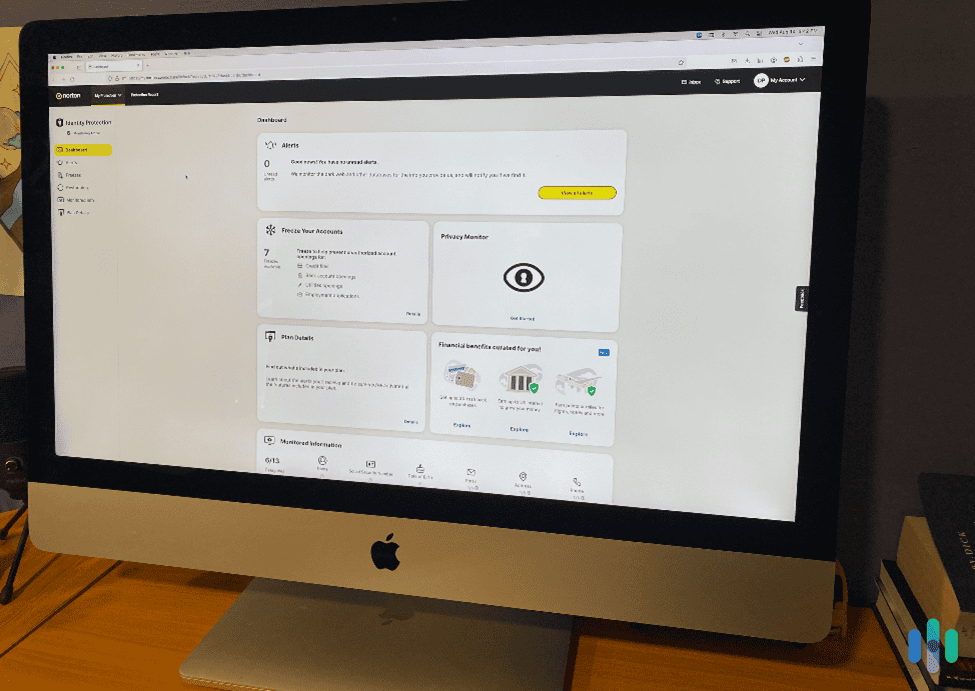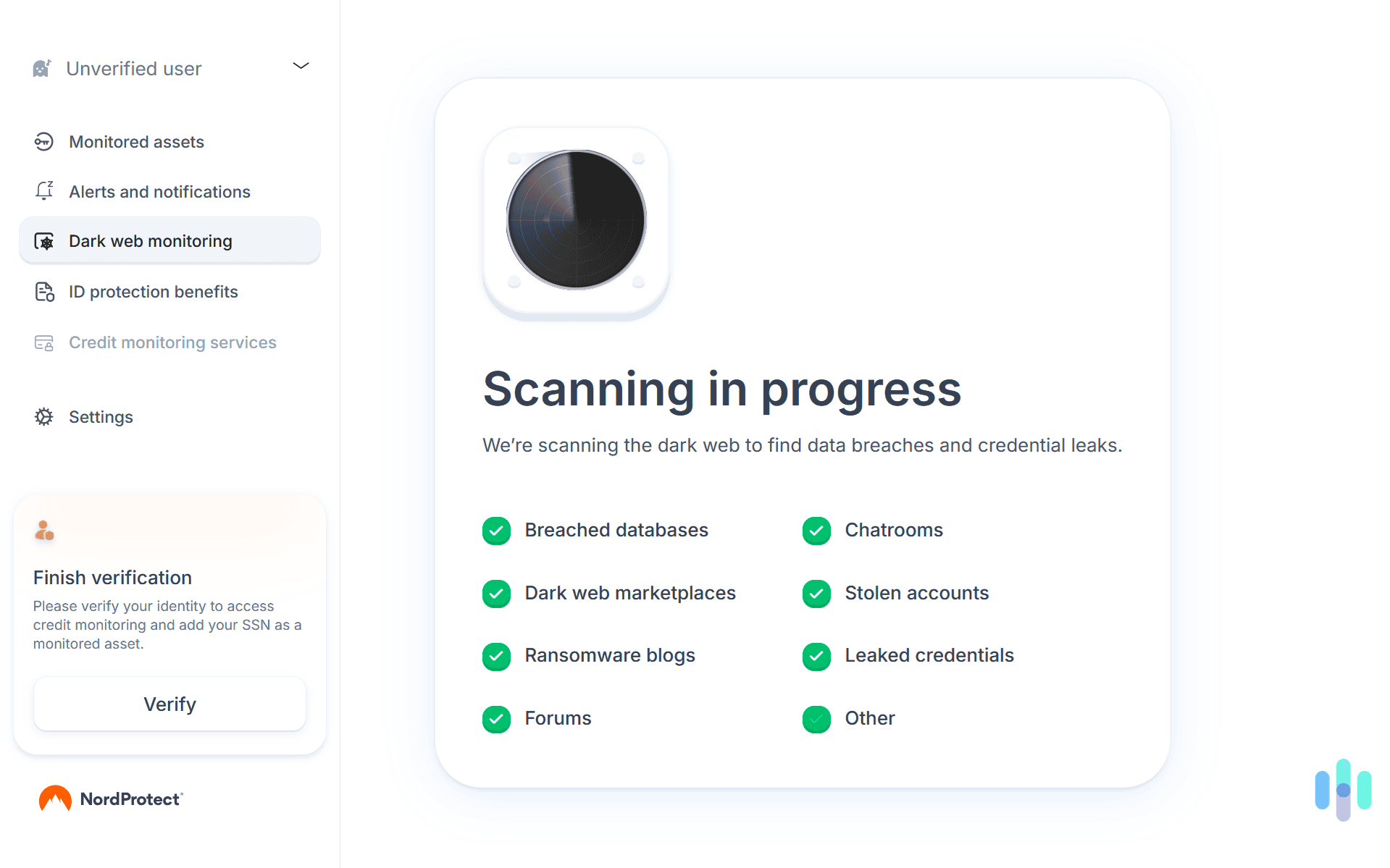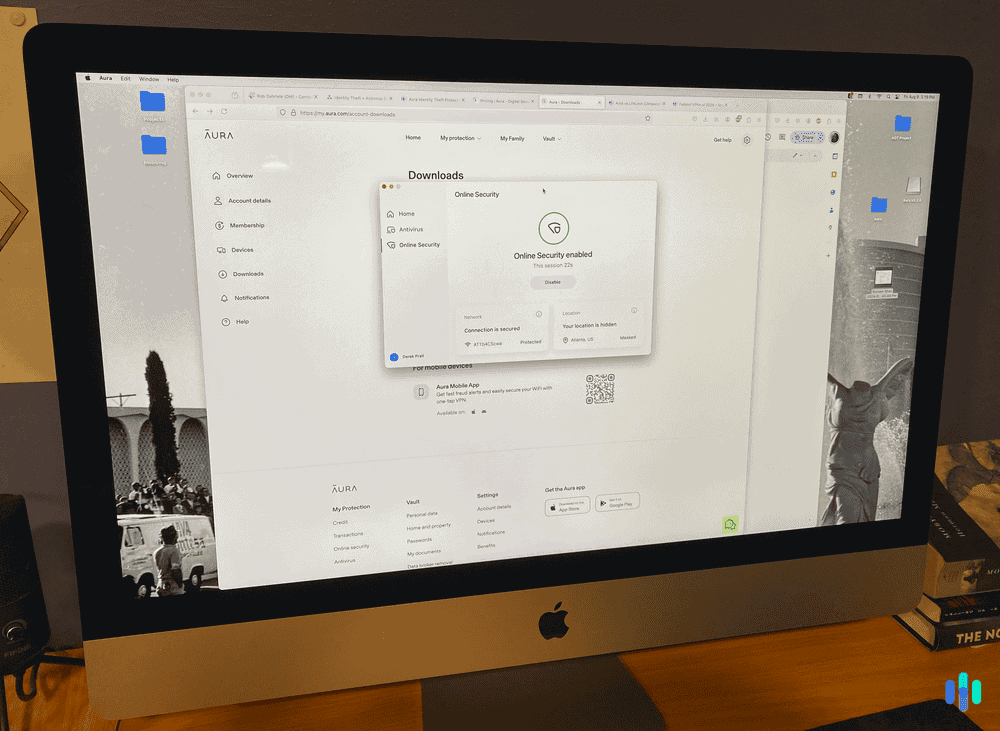Identity Theft Statistics in 2025: Looking Into America’s Fastest-Growing Crime
We took a deep look at this year’s identity theft statistics to see why incidents reached an all‑time high, and how you can protect yourself.
Every 4.9 seconds, someone becomes a victim of identity theft in the United States.1 That’s less time than it takes to read this paragraph. Over the year, that adds up to over 6.4 million identity theft and fraud reports sent to the Federal Trade Commission, marking a significant increase from previous years.
Understanding these statistics isn’t about fear-mongering – it’s about arming yourself with knowledge. When you know how identity theft happens, who it affects, and what the real risks are, you’re better equipped to protect yourself against identity theft. That’s why we compiled the most useful identity theft statistics to help you reduce your risk. Let’s dig in.
>> Check Out: Best Identity Theft Protection Services of 2025
The Rising Threat of Identity Theft
Identity theft has a long history. The first widely cited case dates back to 1548.2 That said, it’s never been a bigger threat than it is today. Last year’s numbers even surpassed the historic highs that occurred in 2021 during the COVID pandemic.
Back in 2001, the Federal Trade Commission (FTC) only received about 325,000 reports of identity theft-related crime. That’s still a lot of reports, but last year they received almost 20 times more. This is a concerning trend with no signs of slowing down.
Did You Know: Identity theft is one of the fastest-growing crimes in America with nearly an 85 percent increase in incidents over the past decade. This is a result of a massive increase in cybercrime. We show you how to combat cybercrime specifically in our guide to digital security and online safety.
Year-Over-Year Growth
To highlight this consistent growth of identity theft, let’s break down the numbers from the past two decades:
| Year | Total Reports | Median Fraud Loss per Victim |
|---|---|---|
| 2004 | 860,383 | $400 |
| 2009 | 1,428,977 | $399 |
| 2014 | 2,620,931 | $498 |
| 2019 | 3,485,938 | $320 |
| 2024 | 6,471,708 | $497 |
With the massive increase in the number of victims, we’d hope to see a smaller impact per victim, but the median loss has remained stable over the years. That shows these criminals are able to steal just as much per person despite being able to target a much larger portion of the population.
This could be attributed to how easily cyber-enabled scams scale. One attacker can target dozens or hundreds at a time, so per‑victim impact hasn’t disappeared despite a massive increase in the amount of victims.
>> Read More: Cyber Security Tips, Facts & Statistics for 2025
Types of Identity Theft by the Numbers
Financial fraud remains the most common type of identity theft, accounting for over 40 percent of all cases. Just because it’s the most common doesn’t mean it’s the type that will affect you. So, we’ll cover the three main types of identity theft.
Financial Identity Theft

Credit card fraud leads the pack, representing over 450,000 reports in 2024. Although some of those reports were from people stealing existing cards, over 400,000 reports were about new accounts. That’s when an identity thief uses your information to open up a new credit card. The best credit protection services help protect against this by monitoring your credit reports looking for suspicious activity like new lines of credit.
Surprisingly, credit card fraud does not cause the highest amount of losses. Bank transfer and payment fraud cost consumers over $2 billion in 2024 alone, compared to $275 million for credit card fraud. This fraud refers to a thief accessing your bank account and transferring or withdrawing your money. It’s one of the most dangerous types of account takeover fraud.
Medical Identity Theft
Medical identity theft is less common, accounting for 10,116 reports, but still worthy of mention as it can impact the healthcare you receive. If someone steals your identity, then uses it to receive and pay for medical care, it can corrupt your health records. This can cause you to receive incorrect medical treatment.
Pro Tip: Regularly review your medical insurance Explanation of Benefits statements, even if you haven’t visited a doctor. This is typically where you’d find the first signs of medical identity theft. Learn more in our guide to preventing medical identity theft.
Employment Identity Theft
With 37,556 reported cases in 2024, employment-related identity theft might seem minor, but it grew 20 percent year-over-year. Thieves use stolen Social Security numbers to gain employment, leaving victims to deal with tax complications and potential criminal background issues.
Demographics: Who Gets Targeted Most?
Identity thieves don’t discriminate, but certain groups face higher risks. Here’s a breakdown of identity theft rates by generation:
| Generation | Percentage of Identity Theft Reports |
|---|---|
| Generation Z | 21% |
| Millennials | 42% |
| Generation X | 24% |
| Baby Boomers | 11% |
The percentage of reports only tells half of the story. Even though Baby Boomers are the least at-risk age group, they tend to suffer the largest losses per incident. Bank account fraud accounts for a higher percentage of their identity theft reports than any other age group, and as we discussed, this type of fraud can drain an individual of their entire savings.
Expert Insight: Since recent increases in identity theft are largely due to cybercrime, it makes sense why older generations are more protected. They’re simply not online as much, and therefore their information is less exposed to threats like data breaches.
Geographic Patterns
You might not expect it, but the state you live in has a significant impact on your risk of becoming an identity theft victim. Residents of Florida, the state with the highest number of identity theft reports per capita, are at over five times more risk than residents of South Dakota. We tried to find explanations for these disparities by checking age and income distributions but didn’t find a simple explanation. Awareness, digital literacy, and reporting behaviors likely play a role.
>> Related Reading: 47 States Have Weak or Nonexistent Consumer Data Privacy Laws
Financial Impact and Recovery Time

It’s true that the majority of identity theft cases result in less than $1,000 lost for the victim. However, nearly 125,000 people reported losing over $10,000 due to an identity theft incident. That’s a significant amount of loss already, but money is just part of the equation.
Recovery time is the other part. The IRS reports that it takes an average of 22 months before those they help through the Identity Theft Victim Assistance program recover their identity.3Complex cases involving multiple types of fraud can take even longer to fully resolve. During this time, victims often can’t qualify for loans, mortgages, or even apartment rentals. They won’t even be able to collect their tax refund.
Pro Tip: Document every interaction related to identity theft recovery. Dates, times, names, and reference numbers will prove invaluable if disputes arise later.
How Identity Thieves Strike
Understanding attack methods helps you recognize threats and minimize your risks. For instance, you can avoid becoming a part of the 371,651 fraud reports that occur from phishing emails by learning how to recognize phishing attempts. Similarly, by keeping your personal data secure online, you can avoid becoming a part of the 24 percent of identity theft victims who were also victims of a data breach.4
Emerging Threats

More recently, digital skimming has emerged as a growing threat. These attacks capture payment information from legitimate websites through injected malicious code. Unlike traditional skimmers on ATMs, digital skimming leaves no physical evidence. Using the best antivirus software can help you avoid these dangerous sites as they check the sites you visit for malicious code.
Social media oversharing also increases your risks. Thieves piece together information from multiple posts – birthdays, pet names, school histories – to answer security questions or create convincing phishing attempts. Instagram and Facebook remain the primary sources, but professional networks like LinkedIn increasingly provide valuable data for sophisticated attacks.
>> Read About: How To Protect Yourself From Identity Theft
Prevention and Protection Statistics
Here’s encouraging news: proactive measures work. One measure you can start taking today is monitoring your credit report regularly. This helps you spot fraud sooner, which tends to reduce losses and speed up recovery. You can go a step further by subscribing to one of the best identity theft protection services with fraud detection that offer near real-time credit monitoring
While you can certainly reduce your risk of falling victim to identity theft, you’ll never be able to bring that risk down to zero. Identity protection services understand this, so they pair their services with identity theft insurance that helps you recover in the event of your identity getting stolen. The best identity theft restoration services include insurance of at least $1 million.
Actionable Tip: Always use two-factor authentication on your accounts with personal information. It adds another layer of security so that even if a cybercriminal steals your password, they still won’t be able to access your accounts.
Conclusion: Taking Action Against Identity Theft
The statistics are clear: identity theft risks continue to grow year after year. With 22 percent of Americans experiencing identity theft at some point in their lives, preparation isn’t paranoia – it’s The good news is that you can reduce your risk of becoming a part of these statistics.
Start today by checking your credit reports, setting up account alerts, and reviewing your social media privacy settings. These simple steps, taking less than an hour, make your identity harder to steal and can help you catch signs of identity theft early.
Frequently Asked Questions About Identity Theft
-
How common is identity theft in the United States?
Identity theft affects approximately six million Americans annually. Reports have doubled over the past six years.
-
What is the average financial loss from identity theft?
The median loss is about $500, but 13 percent of victims lose more than $10,000.
-
How long does it take to recover from identity theft?
Most victims spend 100 hours over the course of a full year resolving identity theft. Complex cases involving multiple fraud types can take several years to fully resolve.
-
Which age group is most affected by identity theft?
Millennials are the most targeted group at 42 percent of all cases. However, victims over 70 experience higher losses with a median loss of over $1,000.
-
Can identity theft affect my credit score?
Yes, victims of financial identity theft can experience significant drops in their credit score. You can report credit lines associated with identity theft to the three credit bureaus to help recover your score quicker.
-
What's the most effective way to prevent identity theft?
Since recent increases in identity theft largely stem from an increase in cybercrime, improving your digital security posture is the most effective ways to prevent identity theft.
-
Huff Post. (2017). Missing Spring Breaker Was Raped, Shot And Fed To Alligators, FBI Agent Testifies.
huffpost.com/entry/brittanee-drexel-missing_n_57c4274be4b085c1ff2a1e54 -
Thomas & Pearl. (2017). Florida, Spring Breakers, and Unfortunate Accidents.
thomasandpearl.com/florida-spring-breakers-unfortunate-accidents/ -
Washington Post. (2015). Here’s your annual reminder to be careful on spring break.
washingtonpost.com/news/grade-point/wp/2015/03/19/heres-your-annual-reminder-to-be-careful-on-spring-break/ -
ABC News. (2010). Spring Break Teen Tragedy: How Safe Are Your Children?
abcnews.go.com/GMA/teenager-spring-break-dies-intoxicated-fall-hotel-balcony/story?id=10287016

